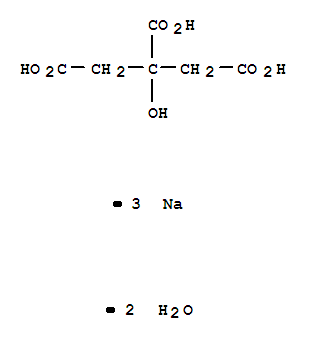- Chemical Name:Sodium Citrate
- CAS No.:6132-04-3
- Deprecated CAS:8055-55-8,183748-56-3,856354-90-0,1000844-65-4,1648840-06-5,2095548-08-4,2490283-85-5,1000844-65-4,1648840-06-5,183748-56-3
- Molecular Formula:C6H9Na3O9
- Molecular Weight:294.101
- Hs Code.:H2COONa)2.2H2O MOL WT. 294.10
- European Community (EC) Number:200-675-3,612-118-5,686-193-8
- ICSC Number:1218
- UNII:RS7A450LGA
- DSSTox Substance ID:DTXSID2026363
- Nikkaji Number:J1.168A
- Wikipedia:Trisodium citrate,Trisodium_citrate
- Wikidata:Q409728
- NCI Thesaurus Code:C62075,C66542
- RXCUI:1310549,56466
- Pharos Ligand ID:7619Y9YHA9GT
- ChEMBL ID:CHEMBL1355
- Mol file:6132-04-3.mol
Synonyms:anhydrous sodium citrate;Citra ph;Monosodium Citrate;sodium citrate;sodium citrate dihydrate;Sodium Citrate Monobasic;sodium citrate, anhydrous;trisodium citrate dihydrate



 Xi
Xi


